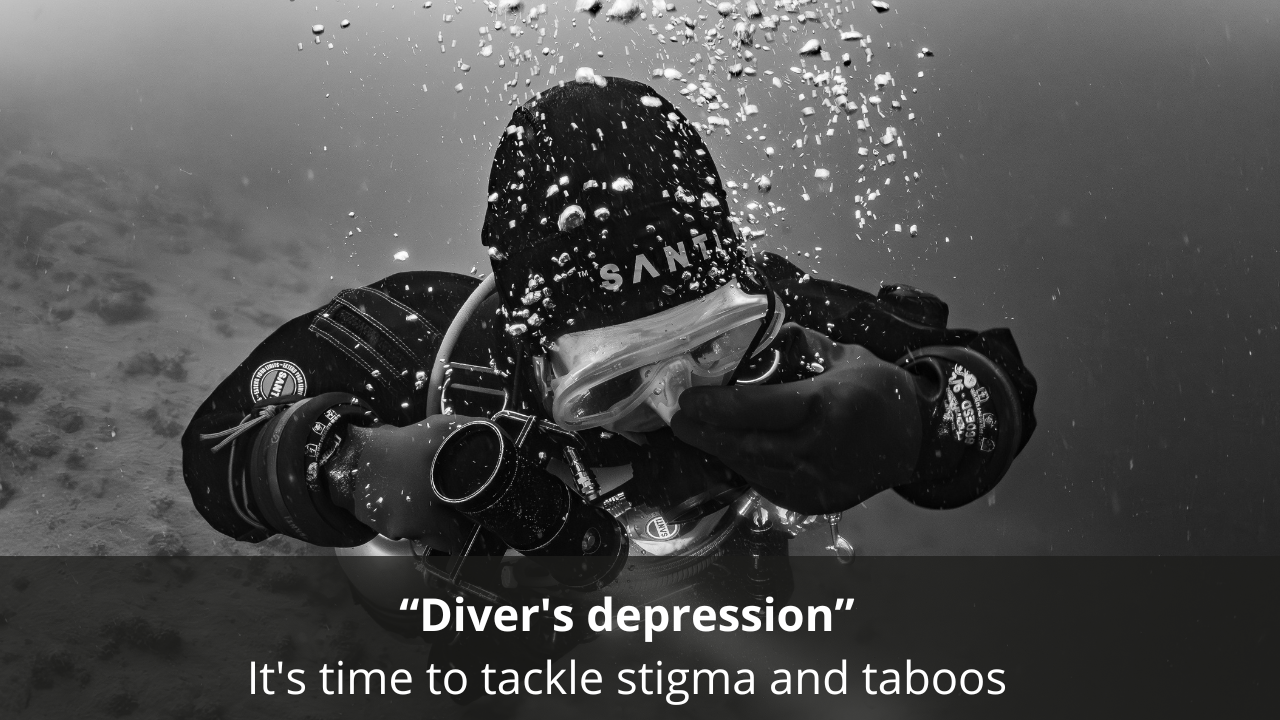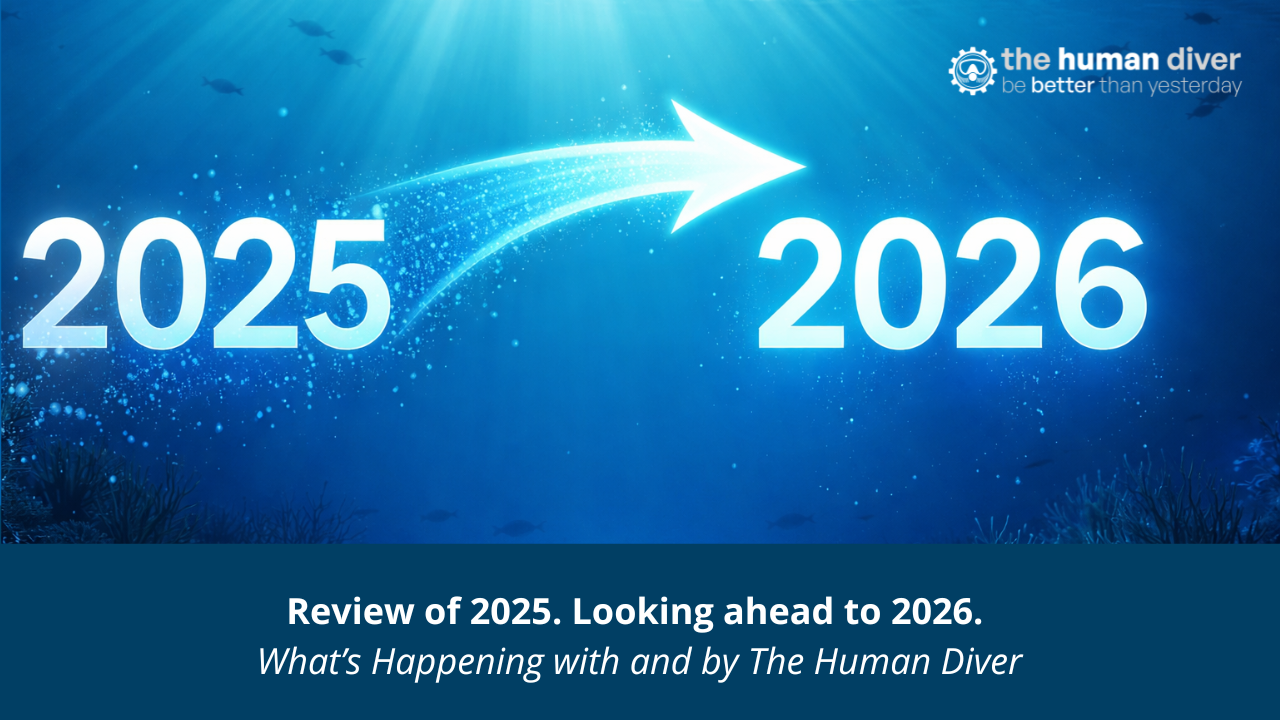
DEBrIEFing - Capturing the experience and improving learning
Feb 12, 2023This week I gave a presentation to eight young CEO's/presidents who were on a diving trip as an offsite get-together. They were all AOW-qualified and relatively inexperienced. The presentation focused on how it is possible to take the lessons I, and the other Human Diver instructors, teach in the diving space and apply it to non-diving environments. We talked about organisational drift, competing goals and tensions, the requirement to create a shared mental model across the team using non-technical skills, the need for an environment that supports psychological safety and a Just Culture, and how to convert local learning by 'front line experts' into organisational learning to improve safety and productivity, cognisant of the tensions that exist within the system.
One of the key messages they took away was the need to learn and practice debriefs as a way of learning from the past, to set themselves up for future dives. After the first dive after the presentation, they put it into practice and identify areas for reinforcement, and areas where they needed to improve.
The DEBrIEF framework is a core tool that we use during the Human Diver educational programmes and this blog will provide a brief summary of it, and how it works. You can download a full PDF of this at the end of the blog.
The DEBrIEF framework
The DEBrIEF Framework is a tool used to understand what went well and what went wrong during a dive. The purpose of this framework is to learn from experiences, both positive and negative, in order to improve future dives. The focus is on the process, rather than the outcome, and it is important to understand why things worked well or went wrong. The framework is designed to be used in small groups of people, and it is essential that everyone involved in the dive is able to contribute to the debriefing.
An effective debrief requires a psychologically safe environment, where team members feel comfortable speaking up and sharing their thoughts and experiences. The collective belief of how team members and leaders respond when someone raises a difficult issue is an important factor in creating a psychologically safe environment. The DEBrIEF framework can be adapted for use in larger groups, but the level of detail may need to be adjusted.
When looking at a negative outcome, such as a rapid ascent or low gas situation, the tendency is to focus on blaming individuals for not following their training. However, it is important to understand that their actions made sense to them at the time, based on the information they had available. When looking at a positive outcome, it is easy to simply rest on our laurels and think nothing went wrong. However, in order to reproduce a successful dive, it is necessary to understand what specifically worked and why.
The DEBrIEF framework is a valuable tool for divers, as it helps them to identify and understand what went well and what didn't during a dive. By analyzing these experiences and learning from them, divers can improve their skills and increase their safety in future dives. The framework encourages a psychologically safe environment, where team members feel comfortable sharing their thoughts and experiences, which is essential for effective debriefing.
D - Define the scope of the debrief (duration) and did we achieve the goals.
The definition phase of the debrief is a crucial step in ensuring that the debriefing process is effective. The first part of the definition phase involves determining the length of time for the debrief, which informs the team how much detail to go into and helps to keep the discussion focused. The second part involves defining the aims, goals, and objectives of the dive. This helps to ensure that the debrief stays on track and provides a way to assess the success of the dive. By defining the goals and objectives of the dive, the team can determine whether they were met and assess the value of having a plan in place.

E - Set an Example, create psychological safety
Creating a psychologically safe environment is crucial for effective debriefing, and one way to do this is for the leader to show humility by sharing a personal mistake or error made during the activity. By sharing a meaningful example, the leader sets the tone for open and non-judgmental discussion of errors and failures. This helps to foster an environment where team members feel comfortable sharing their experiences and insights, which is essential for learning and improvement. By acknowledging and discussing mistakes in a non-judgmental way, the team can work together to find ways to prevent similar mistakes in the future.
B - Background/Basics (pre-execution)
The background and administration of the dive is an important part of the debriefing process. This section covers the timing, clarity of the plan, and any dependencies or assumptions that were not identified during the dive. The purpose of this section is to assess the non-operational aspects of the dive and to provide lessons for future planning and assumptions. By evaluating the background and administration of the dive, the team can identify areas for improvement and ensure that future dives are better planned and executed. This information can also be used to validate or invalidate assumptions and help to avoid similar mistakes in future dives.
r - Review the timeline (intentionally small r)
It is easy to focus on the timeline e.g., we did this, then this, then that, and this rarely contributes to learning. The execution of the dive is reviewed in a chronological manner as part of the debriefing process. The focus is on the key highlights, and the level of detail can vary depending on the participants and the time available. The goal of this section is to understand what happened during the dive and why, without necessarily focusing on future learning points. Many adverse events are a result of interactions or behaviours between different parts of the system, such as different teams' understanding of the dive, equipment usage, dependencies, or assumptions.

I - Internal Learning - Me, I!
The DEBrIEF model is designed to be simple and focused on personal and team learning. The model focuses on one key learning point per team member to reinforce good practices and identify areas for improvement. To reinforce good practice, we examine the information, processes and actions that surrounded the decisions or communications we each made. To correct behaviour, we need to do a similar activity, but this time we will also look at how to improve on the actions. Just identifying it and saying ‘we won’t do that again’ is not enough! This question and the next are answered by each of the team members in turn, starting with the leader.
E - External Learning - Team, others.
The same process as described previously is used to focus on the team aspects of the task. Both internal and external factors are considered and described in specifics rather than generalities. For example, instead of simply saying "good communication" as something that went well, it is more helpful to describe specifically what worked and why. For example, "your light communication was good because you kept the light on the wall where I could see it, and I immediately noticed when you weren't there. And when you had an issue and signalled, it was clear to me there was an issue," this is a more specific and helpful description of what worked and why. By focusing on the specifics, the team can more effectively reinforce good practices and identify areas for improvement.
F - Fix/File/Follow-up
Learning from a dive does not always occur during the debrief, but often requires follow-up actions such as modifying equipment, revising planning assumptions, or reporting incidents in local or global forums. Sharing the learning with the wider diving community can help to improve the practices of more than just those involved in the specific dive. However, for this to happen, there needs to be a culture of seeking out "lessons learned" and understanding why divers acted the way they did, rather than immediately judging them. This approach can help to foster a more positive and supportive environment for learning and improvement.

Summary
The DEBrIEF framework is a simple and effective tool for learning and improvement in diving activities. It focuses on the positive aspects of a dive and identifies areas for improvement, rather than blaming individuals for mistakes. A debrief is about learning, not blaming, and requires a psychologically safe environment where team members can honestly and openly discuss their experiences. A key trait of high-performing teams is continuous development, which comes from learning about the system, people, and decisions made during a dive. An effective debrief requires honesty and strong leadership, and the tool can only be as good as the operator who uses it. To be effective, the operator must practice using the DEBrIEF framework.
Download the standalone DEBrIEF guide here

Gareth Lock is the owner of The Human Diver, a niche company focused on educating and developing divers, instructors and related teams to be high-performing. If you'd like to deepen your diving experience, consider taking the online introduction course which will change your attitude towards diving because safety is your perception, visit the website.
Want to learn more about this article or have questions? Contact us.










